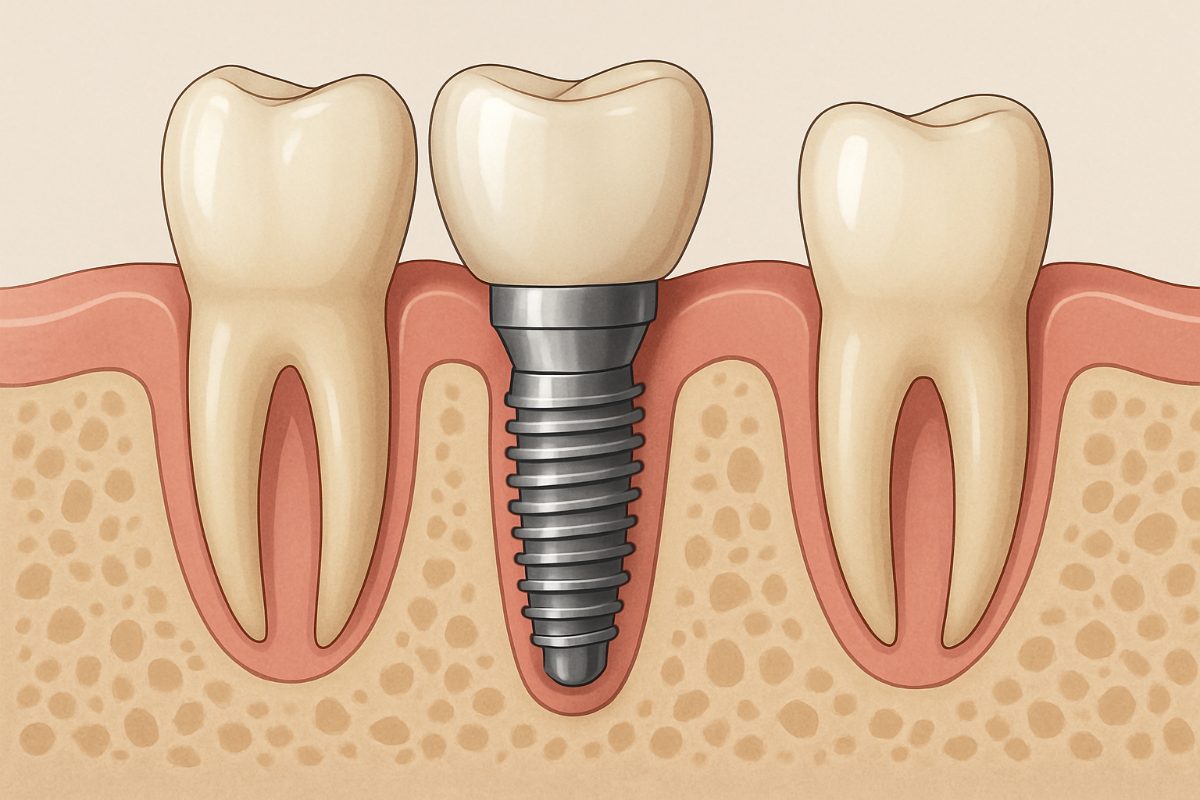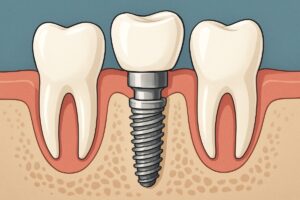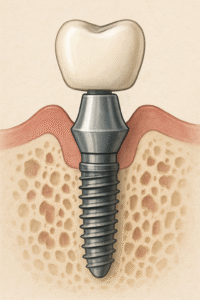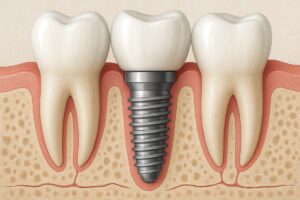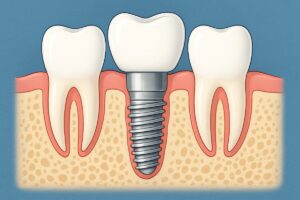If you typed “what is a implant” while looking for answers in Aurora, IL, this post will help. In plain terms, a dental implant is a small metal post that replaces a missing tooth root and holds a natural-looking tooth. Below we explain the parts of an implant, common treatment options, who is a good candidate, what to expect during treatment, benefits and risks, typical costs and financing, and where to get implant-focused care.
What Is a Dental Implant?
A dental implant has three main parts: the implant fixture (a titanium or zirconia post placed into the jawbone), the abutment (connects the post to the visible tooth), and the crown or prosthesis (the tooth-shaped piece you see). The fixture fuses to bone through osseointegration, replacing the root and giving strong support for chewing and speech. Implants preserve bone and look more like natural teeth than removable dentures.
Common Implant Treatment Options
Single-tooth implants
A single-tooth implant replaces one missing tooth. It’s used when a single tooth is lost but neighboring teeth are healthy. The result is a crown that matches your bite and smile and doesn’t require altering adjacent teeth.
Implant-supported bridges and multiple-tooth solutions
When several teeth are missing in a row, two or more implants can support a bridge. This avoids grinding down healthy adjacent teeth and offers stronger chewing than a removable partial denture.
Full-arch solutions (All-on-4 / All-on-X)
Full-arch options use a few strategically placed implants to support a fixed denture for a whole jaw. Typical candidates are people missing most or all teeth, or those with failing teeth who want a stable, long-term solution. Benefits include immediate function in many cases and improved confidence.
Who Is a Good Candidate?
Good candidates have healthy gums, enough jawbone, and controlled medical conditions. Smoking, uncontrolled diabetes, or a history of radiation to the jaw can affect success. Modern tools like CBCT 3D scans and a clinical exam determine bone volume and exact implant placement needs.
What to Expect During Treatment
Consultation and planning
Your visit starts with an exam, digital scans, and often a CBCT 3D image. This creates a precise treatment plan and timeline, including whether bone grafts or extractions are needed.
Surgery and healing
Implant placement is a minor surgery. After placement, osseointegration usually takes several months while the implant bonds to bone. You’ll have follow-up visits to check healing and adjust temporary teeth if needed.
Final restoration
Once healed, the abutment and final crown or prosthesis are placed. Restorations can last many years with good care; zirconia crowns offer strong, natural-looking results.
Benefits and Possible Risks
Benefits include better chewing, speech, bone preservation, and durability. Risks are infection, implant failure, need for bone grafts, and surgical complications. Careful planning and skilled clinicians reduce these risks.
Cost Factors and Financing Options
Costs depend on number of implants, grafting needs, materials, and lab work. Dental insurance often has limits on implants, but many practices offer financing or payment plans to spread cost.
Why Consider an Implant-Focused Center?
Grand Dental Implant Centers provides implant-focused care across Illinois with in-house labs, CBCT imaging, IV sedation options, zirconia restorations, and full-mouth solutions. They handle planning through final restorations to improve speed and quality of care.
Meet the implant clinicians
Dr. Cole Wells and Dr. Brandon Bice are implant-trained clinicians at the Aurora center with advanced training and professional memberships, offering expertise in single implants and full-arch treatments.
Next Steps / Call to Action
If you searched “what is a implant” in Aurora, IL and want a consult, request an appointment to review your CBCT, timeline, and financing options. Bring your medical and dental history to the first visit and ask about sedation, materials, and expected recovery so you can make an informed decision.

